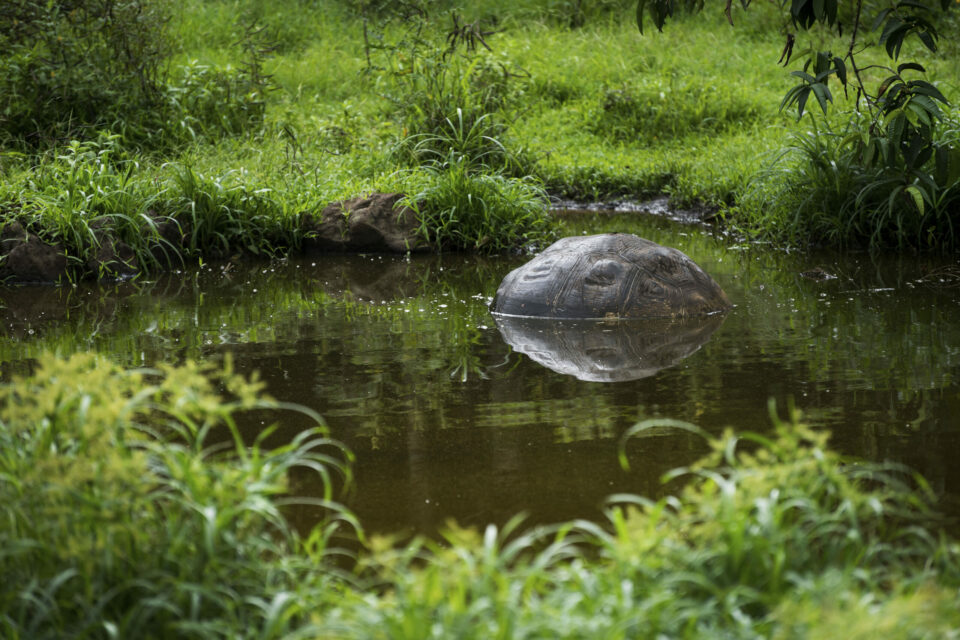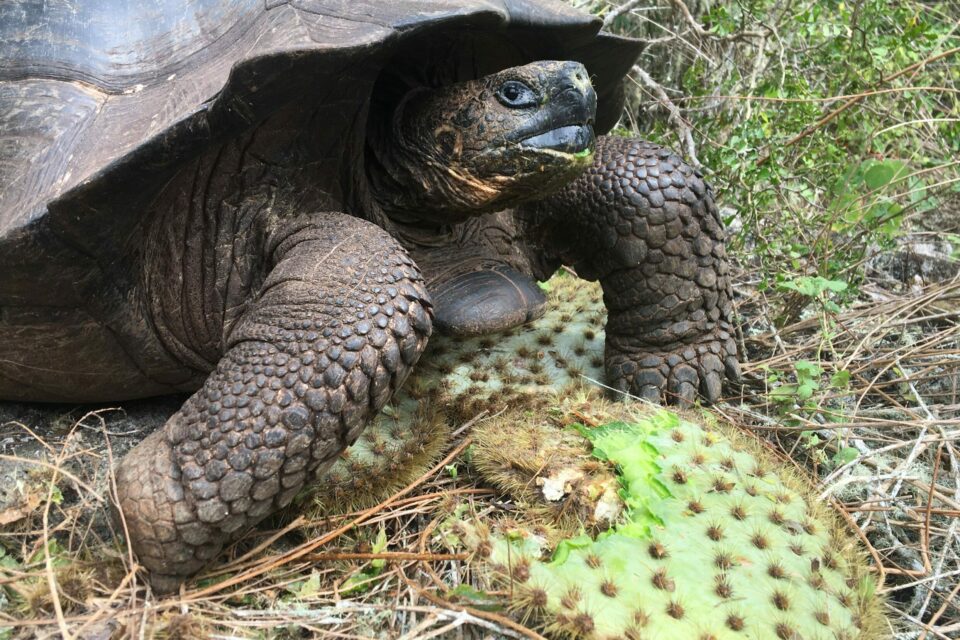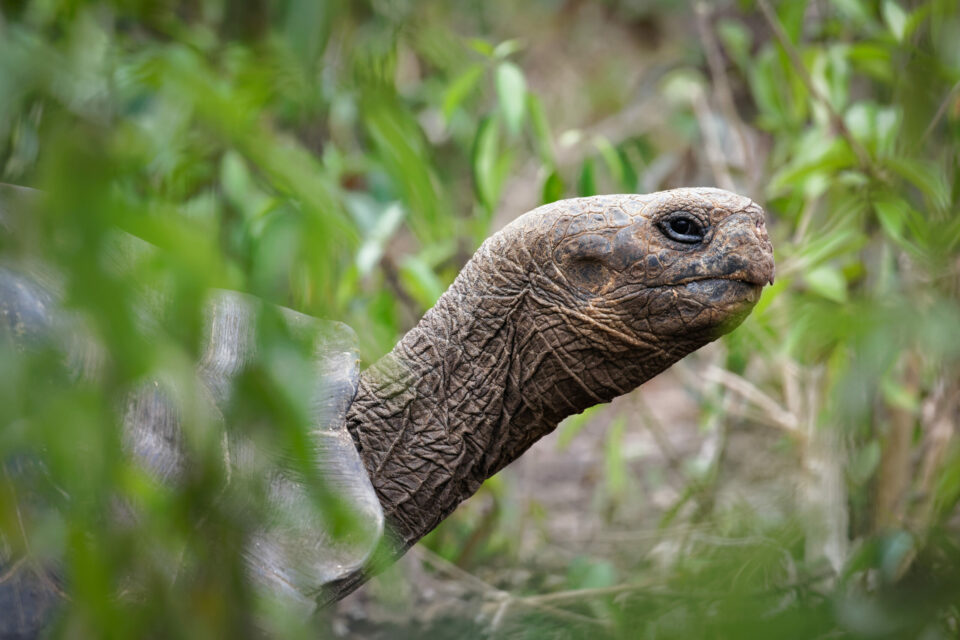

Human activity drives antibiotic resistance in Galapagos tortoises
Scientists have identified the presence of antibiotic resistance in the Galapagos giant tortoises that live alongside humans. Ainoa Nieto Claudín, researcher and wildlife veterinarian explains more.
Scientists have identified the presence of antibiotic resistance in the emblematic Galapagos giant tortoises that live alongside humans. These results confirm that these reptiles, known to be excellent engineers of their ecosystems, are also sentinels of ecosystem health, acting as indicator species for the emergence of new strains of antibiotic-resistant bacteria, one of the greatest threats to public health around the globe.

To conduct this study, scientists from Charles Darwin Foundation, Saint Louis Zoo Institute for Conservation Medicine, and Complutense University of Madrid collected faecal samples from two populations of giant tortoise. On Santa Cruz, the island with the largest human population in the Archipelago, they sampled a total of 200 tortoises on cattle and tourist farms, near urban settlements and within protected areas. As a comparison, the team climbed Alcedo Volcano on Isabela island to collect samples from a species that has little or no contact with humans. Researchers in Spain carried out the analysis of these samples, looking for bacteria with genes encoding resistance to antibiotics commonly used in human and veterinary medicine. The results were conclusive: tortoises on Santa Cruz have gut bacteria with more antimicrobial genes than the tortoises on Alcedo. Moreover, the tortoises living in the more modified habitats of Santa Cruz, near towns and on cattle farms, carry the most antibiotic-resistant bacteria of all.
Giant tortoises are key species for Galapagos ecosystems and are considered ‘ecosystem engineers’, modifying ecosystems where they thrive and disperse seeds. Galapagos tortoises are also migratory on islands like Santa Cruz, where they leave the protection of the National Park and enter private lands every year during their annual migration. For up to six months a year these tortoises will share habitat with humans, exposing them to cars, plastic pollution and pesticides, but clearly also strains of antibiotic-resistant bacteria.
The spread of drug-resistant bacteria in human populations is of concern because it makes treatment of bacterial infections more difficult. As humans and animals mix, antibiotic-resistant bacteria are finding their way into the wider ecosystem, particularly in places like Ecuador where antibiotics can be obtained without prescription. The presence of antibiotic-resistant bacteria in wild species increases the opportunity for the evolution of new, more resistant strains, further compromising and complicating the treatment of diseases in both humans and animals. Everyone in Galapagos must combine efforts to address this emerging threat to the health of local inhabitants, domestic animals and wildlife species.

This article was originally published in the Autumn/Winter 2021 edition of Galapagos Matters.
This project was conducted in collaboration with the Galapagos National Park Directorate, The Charles Darwin Foundation, Saint Louis Zoo Institute for Conservation Medicine, Complutense University of Madrid, European University of Madrid, and the INIA-CISA laboratory in Madrid.
How you can help tortoises
Find out more about our Galapagos Tortoise Movement Ecology Programme here. You can help us protect Galapagos giant tortoises by donating or by purchasing one of our giant tortoise adoptions today!
Related articles


The return of the Floreana giant tortoise

Galapagos giant tortoises: An update from the field


